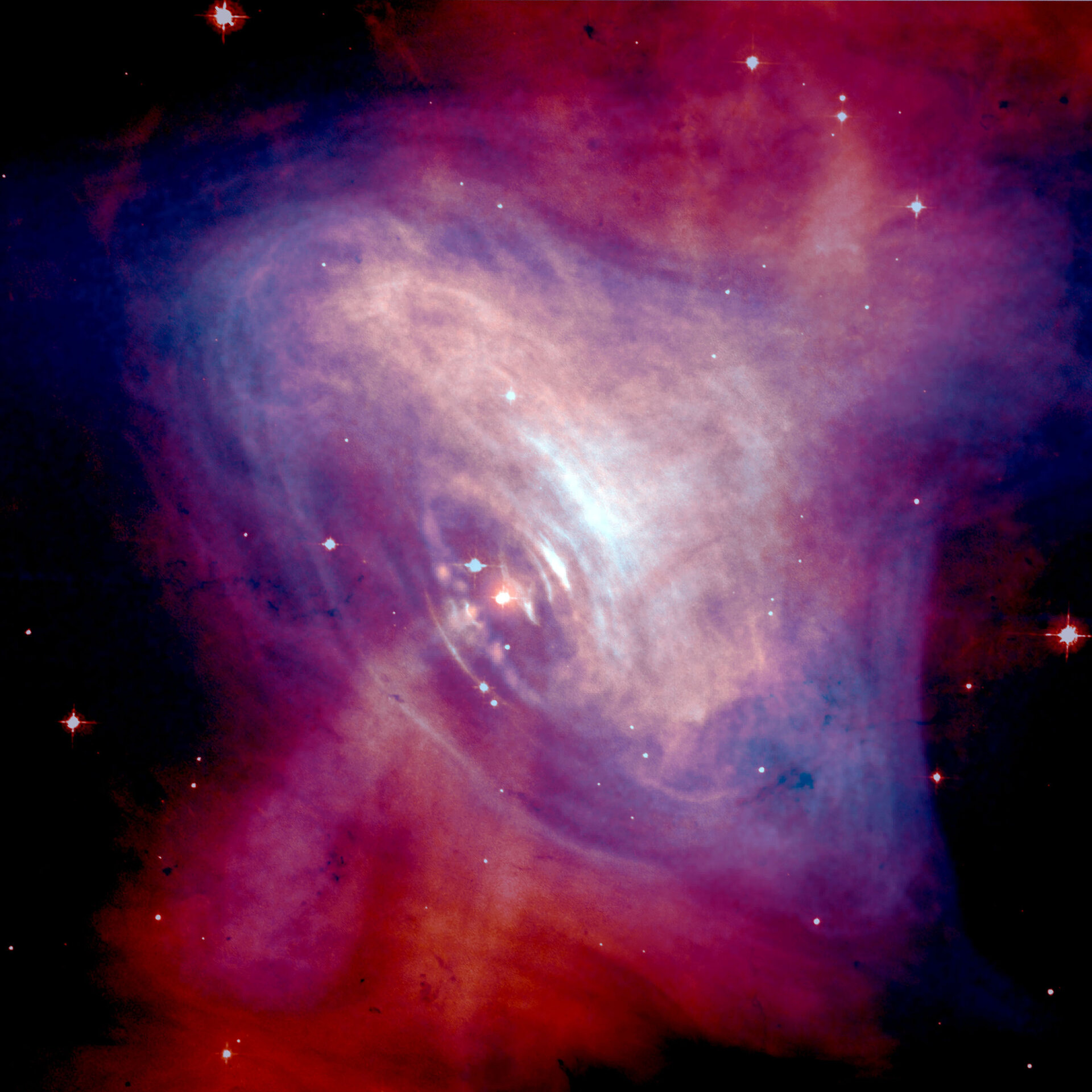Neutron stars: pulsars and magnetars
A neutron star is the remaining core of a massive star, once it has exploded. They come in different types, including fast-spinning pulsars and and strongly magnetic magnetars.
Millions of neutron stars populate our galaxy, the Milky Way. Made almost entirely of neutrons (subatomic particles with no electric charge), these stellar corpses concentrate more than the mass of our Sun within a sphere of around ten kilometres in diameter.
Neutron stars are so dense that a sugar-cube-sized object of neutron star material would weigh as much as all of the people on Earth!
Aside from 'ordinary' neutron stars, astronomers have discovered that some neutron stars are more extreme than others. Based on how fast they spin and how strong their magnetic field is, they have identified two special neutron star types.
Some neutron stars spin extremely fast, up to hundreds of revolutions per second. The poles of these so-called ‘pulsars’ produce beams of electromagnetic radiation including radio waves, visible light, X-rays and gamma-rays. Thanks to their rotation, we detect this radiation as regularly timed pulses, similar to a spinning lighthouse beacon that appears to flash on and off.

‘Magnetars’ are another class of neutron star, named for their ultra-strong magnetic field. Their magnetic field strength is about 100 thousand million Tesla, a thousand times more than an 'ordinary' neutron star. By comparison, Earth’s magnetic field strength is some tens of a millionth of a Tesla. Most media used for data storage can be erased if they are exposed to a magnetic field of one thousandth of a Tesla.
So far, only a few tens of magnetars have been found. A small subset of these are also known as ‘soft gamma repeaters’, or SGRs, because they sporadically release large bursts of low energy (soft) gamma rays and (hard) X-rays, usually during short-time periods of the order of one tenth of a second.















 Germany
Germany
 Austria
Austria
 Belgium
Belgium
 Denmark
Denmark
 Spain
Spain
 Estonia
Estonia
 Finland
Finland
 France
France
 Greece
Greece
 Hungary
Hungary
 Ireland
Ireland
 Italy
Italy
 Luxembourg
Luxembourg
 Norway
Norway
 The Netherlands
The Netherlands
 Poland
Poland
 Portugal
Portugal
 Czechia
Czechia
 Romania
Romania
 United Kingdom
United Kingdom
 Slovenia
Slovenia
 Sweden
Sweden
 Switzerland
Switzerland

























